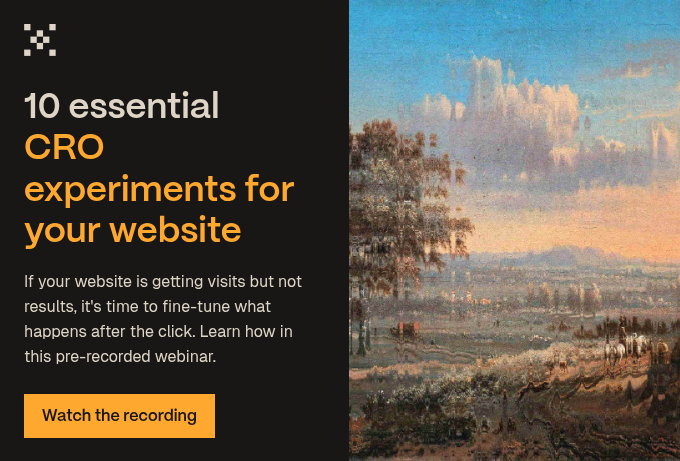‘SEO is not something you do anymore,’ says marketing consultant, speaker and author Chad Pollitt. ‘It’s what happens when you do everything else right.’
Did you know that the number one result on Google receives almost a third of all clicks? It’s safe to say that to make your brand visible, you need your content to rank highly on search engines. A number of factors go into making that happen, not just judicious placement of keywords. Meaning, your B2B SEO strategy must be embedded into every part of your marketing and website.
At Articulate, we no longer view SEO as a separate workstream, but rather as integral to all of our services, by default. That is how we deliver better brand visibility for our clients.
Let’s start with some all-important definitions
Picture a corkboard with crisscrossing strings. Everything’s connected…
If we look at SEO from the perspective that it permeates every part of your online strategy, it helps to break it down into its various components.
Then, you can see how those components fit into strategic marketing workstreams for brand visibility. Here are some of the main terms SEO specialists use:
- Search Engine Optimisation (SEO): The overarching term for the process of increasing the quantity and improving the quality of your organic traffic from a Search Engine Results Page (SERP).
- Technical SEO: The steps you take to make it easier for search engines to crawl and index your site. These include removing duplicate pages, fixing broken ones, adding breadcrumb menus, canonical tags and so on.
- Schema markup: Essentially, site schema is backend code that helps search engines read and classify your content more easily. Think of it as a site map for search engines.
- Core Web Vitals: A set of factors that Google uses to measure your page user experience (UX). This includes loading time, interactivity, visual stability, mobile-friendliness and more.
- On-page SEO: The specific process of optimising your website pages for search. This includes activities like targeting keywords, adding title tags and ensuring meta descriptions are optimised with the correct word count, a clear benefit, a call-to-action and so on.
- Off-page SEO: The activities you conduct ‘off’ of your website that build visibility. Generating backlinks from referring domains, posting on social media, investing in local SEO and more.
- Keyword research: Identifying popular search terms used when someone looks for information. If several pages on your site rank highly for popular keywords, then the majority of your traffic will come from those search terms. In fact, more than 50 percent of total website traffic comes from organic search.
How to build an integrated B2B SEO strategy
As a marketing leader, you want to maximise your brand visibility by leveraging the power of SEO. However, there are some common challenges you may be facing. Under-resourced teams, decreasing marketing budgets, expensive Martech tools and underutilised data, to name but a few.
While 70 percent of marketers prefer to manage SEO in-house, many businesses are seeing the value in bringing in outsourced marketing experts to meet these challenges head-on. Armed with technical expertise and an impressive, future-proof Martech stack, outsourced marketing experts have the know-how to weave SEO best practices into everything they do.
Whether you do it yourself or employ an agency to help you out, let’s now explore some of the most effective ways to intertwine B2B SEO seamlessly into your wider marketing plan.
Use branded keywords to find engaged leads
More than 70 percent of B2B stakeholders start their product research with a search engine. To gain brand recognition around your business and products, include branded keywords and phrases on your site. Meaning, search terms that feature your business’s name. Think ‘Apple iPhone’ or ‘Nike trainers’.
Usually, people search for branded keywords or phrases when they know what they’re looking for. In turn, these terms and phrases often have a really high click-through rate. So, if your site isn’t the first search result that comes up when someone searches for your brand, you’re missing out on some highly qualified leads.
Conduct some research to find out what people know about your brand and the terms they are searching for that mention you by name. Ensure you have valuable, informative website pages ready for them — with engaging calls-to-action so they can easily get in touch.
Optimise your website performance with technical SEO
Of course, the front-end of your site is crucial — you want it to include visually pleasing colours, easy-to-read fonts and clickable calls-to-action (CTAs). But it's what goes on behind the scenes that could get in the way of you achieving that number-one ranking. Think of technical SEO as the very foundation of your website. It needs to be titanium-strong to support everything else.
At Articulate, we regularly audit our clients’ sites and have developed an effective and efficient process for website success. Here are the tools we recommend to get the data you need to optimise your site with technical SEO.
- Start with a website audit. We recommend Sitebulb (and use it to audit our clients’ sites).
- Next, assess your page speed with Google PageSpeed Insights and if you’re on HubSpot, use our Fizz+Ginger tool to help identify and fix any on-page SEO factors that impact speed, like image compressions.
- Finally, take a look at your domain authority and backlink profile using Ahrefs.
Now you have the insight you need. Use it to make the necessary changes to the backend of your site to enhance its performance and ensure your website’s foundations are helping you with your brand visibility and not hindering you.
Embed SEO best practices in your content marketing
There is an age-old feud between content marketers and die-hard SEO specialists. How do we appease the robot masses while creating content our fellow humans will enjoy? Balance is crucial here. Effective content marketing is all about providing value to your potential customers — but it needs to be easy to find online.
Your content writers must write with both the audience and search engines at the front of their minds.
Create content that targets the specific keywords and search queries you want to rank for. Keep it up-to-date, experiment with dynamic content like video to enhance on-site engagement and the time spent on your site, and always analyse your content performance using tools like Ahrefs.
Use content promotion to increase brand visibility
Once your website content is live, don’t leave it there and hope for the best. Make use of your company’s social media channels and share it with your followers. Personalise the content to suit the needs of key prospects and existing customers. Then, include it in your email marketing campaigns. Repurpose the content as dynamic, digestible media — YouTube videos, podcasts, webinars and more.
Taking your content marketing materials and promoting them across the web is a great way to ensure every piece gets the engagement it deserves. And more importantly, it will play a huge role in supporting your off-page SEO.
Get authoritative backlinks from content syndication
Content syndication is the process of making your own website’s content available on other websites.
Typically, these sites will have audiences much larger than your own and will distribute your high-quality, relevant content to their audiences. They may post the content verbatim, summarise it, or share a link to your site.
It’s a surefire way to increase your brand visibility and grow the number of valuable backlinks to your website. However, you must be following Google’s best practices to avoid hurting your SEO. For example, without correctly crediting your sources, syndicated content may be a violation of the Scraped Content section of Google’s spam policies. Ensure your teams are clued up on what is acceptable and, more critically, what isn’t.
Build off-site awareness with Public Relations (PR)
While content marketing and syndication boost brand awareness, there is undeniable value in third-party websites, news sites and relevant publications telling your story for you. That’s why PR is so important.
Invest some of your marketing budgets into writing and distributing press releases and building genuine relationships with vertical-specific journalists. This will help with your off-site SEO and boost word-of-mouth marketing.
SEO: making your brand shine
Ever-changing algorithms, more and more competitors, an increase in online content, and the growth of artificial intelligence… When it comes to SEO, a marketer’s job is never done.
It’s critical to stay ahead of the latest SEO trends. Like how you can use Bard, Google’s conversational AI chatbot, to help you navigate algorithm changes, for example.
While some people still view SEO as its own workstream, we’ve evolved beyond monkeys and monoliths. From the very structure of our sites to what we post on our social media channels, modern marketers understand that SEO operates in the shadows across all marketing activities to cast your brand in stark relief.
So, use SEO strategies to make your B2B brand shine as bright as the quasars.
.jpg?width=100&height=100&name=1694622801428%20(1).jpg)
.jpg?width=64&height=64&name=1694622801428%20(1).jpg) Posted by
Sian Cooper
Posted by
Sian Cooper






